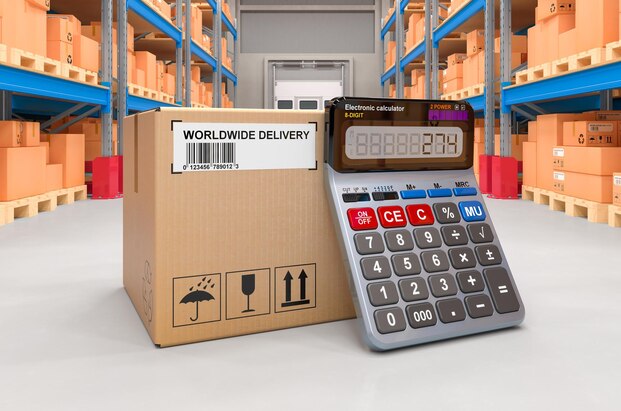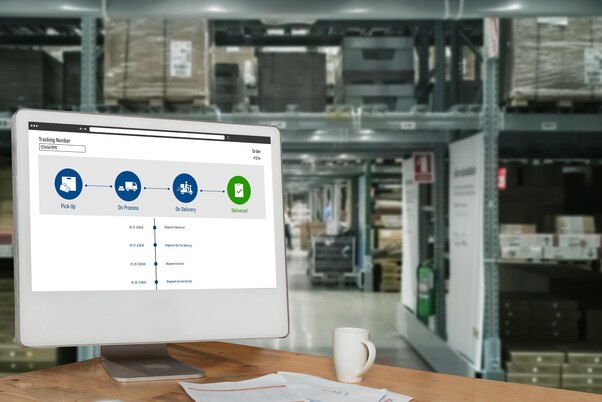Calculating Work-in-Process (WIP) Inventory is crucial for successfully managing your business. This account of unfinished goods can help you spot issues like excessive raw material.
Calculating it can also help you reduce taxes since this inventory is considered an asset. Therefore, you need to know how to calculate work-in-process inventory to leverage this.
In this blog, we will discuss Work-in-Process inventory and how to calculate it. We will also take you through some tips and let you know if your business needs to track this type of inventory.
What is Work-in-Process Inventory?
Work-In-Progress (WIP) Inventory refers to the materials and goods that are being manufactured but not yet completed. It’s an important stage in the production process, existing between the initial purchase of raw materials and the final production of finished goods. WIP Inventory includes all the materials, labor, and overhead costs that have been invested in these partially finished goods.
For instance, if you make chairs, you might buy wood as a raw material. However, you must process the logs into planks before taking the wood to your carpenters. While the wood is between the log and chair stages, it’s a part of your WIP inventory.
The Difference between Work-in-Process Inventory and Finished Goods
Before you can learn how to find work in process inventory, you need to know the differences between Work-in-Process Inventory and finished goods.
On the one hand, Work-in-Process Inventory is unfinished goods that are still undergoing the manufacturing process. On the other hand, finished goods are fully assembled.
The main difference between WIP inventory and finished goods is whether you can sell them since the first is still manufactured while the latter is ready for sale.
How to Calculate WIP Inventory: Work-in-Process Inventory Formula Explained
To better know how to find work in process inventory, you need to understand these three elements first:
- Beginning WIP Inventory: The unfinished goods you had at the beginning of the financial period.
- Manufacturing Costs: The money you spent to craft your goods.
- COGM: The Cost of your manufactured goods.
1. Beginning Work-in-Process Inventory
Your beginning WIP inventory is the value of all your unfinished goods at the start of the financial period. You can find this number among your assets in the balance sheet of your previous financial period. To calculate the beginning WIP inventory, you need to use the same formula as the ending WIP Inventory except for the numbers from the previous period.
Let’s understand the ending WIP inventory.
Ending Work-in-Process Inventory
We call the WIP inventory of the current financial period – the ending Work-in-Process Inventory. Knowing how to calculate ending work in process inventory is very simple. Here is the formula:
Beginning WIP Inventory + Manufacturing Costs – Cost of Goods Manufactured = Ending WIP Inventory
Your Ending WIP Inventory is the addition of your current WIP Inventory and the value you added to it through manufacturing minus the cost of adding that value.
Just like handcrafted furniture, which can be priced at thousands of dollars despite the original log costing less than $100, the manufacturing process adds value to unfinished goods. Nevertheless, the effort and resources put into this transformation come with their own costs. For example, you need to consider the labour cost of cutting logs into planks.
Let’s take that example from the beginning. You are a chair manufacturer that buys logs, processes them, and sells handcrafted chairs. Perhaps in the last financial period, you had calculated your unfinished goods: $100,000. To figure out your Ending WIP Inventory, you need to calculate all the value you added to the chairs.
2. Manufacturing Costs
Manufacturing Costs are what you spend to process your unfinished goods. This is the cost of the raw materials, salaries and wages, and any overhead.
You can calculate the manufacturing costs in the following way:
Materials + Labour + Overhead = Manufacturing Cost
For instance, this might include the cost of logs and salaries of carpenters. Let’s say that it adds up to $30,000.
3. Cost of Goods Manufactured (COGM)
You can find out your COGM by adding your beginning WIP Inventory (that you completed in this period) to the value you added to your unfinished goods. Then, you subtract the cost of manufacturing all inventory that’s still unfinished.
Beginning WIP Inventory + Total Manufacturing Cost – Ending WIP Inventory = COGM
As your Beginning WIP Inventory is $100,000, you only managed to work to complete half of it. So here, it would be $50,000.
The total value you added is still $30,000. However since half of the unfinished work from the previous financial period is still in process, you have $15,000 of unfinished inventory.
So, your COGM would be:
$50,000 + $30,000 – $15,000 = $65,000
Taking these figures, we can see that your Ending WIP Inventory would be:
Beginning WIP Inventory + Manufacturing Costs – Cost of Goods Manufactured = Ending WIP Inventory
$100,000 + $30,000 – $65,000 = $65,000
The Importance of WIP Inventory Accounting
When you know how to find work in process inventory, you can make sound decisions about where to invest your capital. For instance, if your WIP Inventory keeps increasing yearly, you can understand that you can decrease your raw material purchases.
Additionally, WIP Inventory can be leveraged in loan negotiations. And so, you need to accurately understand your current inventory to make these kinds of financial deals.
And most importantly, WIP Inventory inventory affects your balance sheet since it is an asset. An inaccurate WIP Inventory can lead you to make errors in paying your taxes, which can get you in legal trouble.
Does Your Business Require WIP Inventory Accounting?
Not every business needs to calculate work in process inventory. Some have an insignificant inventory or only give services like a therapist.
Here are the types of businesses that require WIP Inventory accounting:
- Craft: If you craft goods out of raw materials, like in the chair manufacturing example, you must keep track of your WIP Inventory.
- Assembly: Businesses like phone companies with parts ordered from different places and then assembled by other companies need to do WIP Inventory accounting.
- Outside Manufacturing: If you have a single company source materials and craft on your behalf, like in dropshipping, then WIP accounting is necessary for your business.
How to Optimize Work-in-Process Inventory Flow: Key Tips
- Supplier: Get suppliers that deliver on time so you won’t delay your manufacturing process.
- 3PL: Let third-party logistics handle parts of your supply chain so you can focus on production.
- Tracking: Use WIP inventory tracking applications to be aware of your WIP Inventory.
- Bottlenecks: Deal with any bottlenecks and stoppages quickly to keep inventory from unnecessarily increasing.
Conclusion
Work-in-Process inventory is all goods you are still processing. You need to be aware of your WIP Inventory to make sure that you keep your asset’s value down for tax purposes. However, there are many other benefits of tracking WIP Inventory, such as being able to leverage that value to get a loan. All in all, you can calculate the WIP Inventory by adding the Beginning WIP Inventory to the Manufacturing cost and subtracting the COGM.








